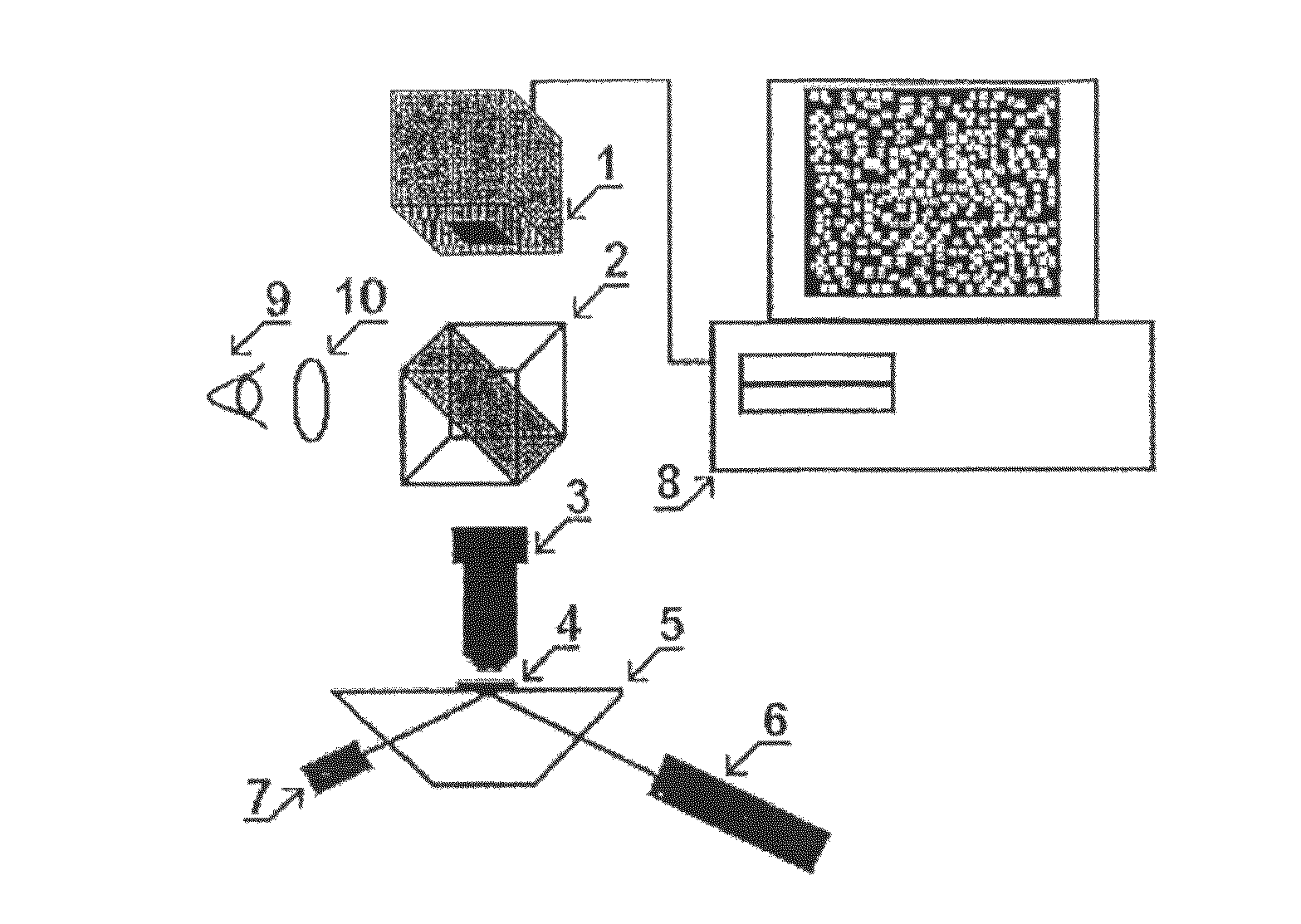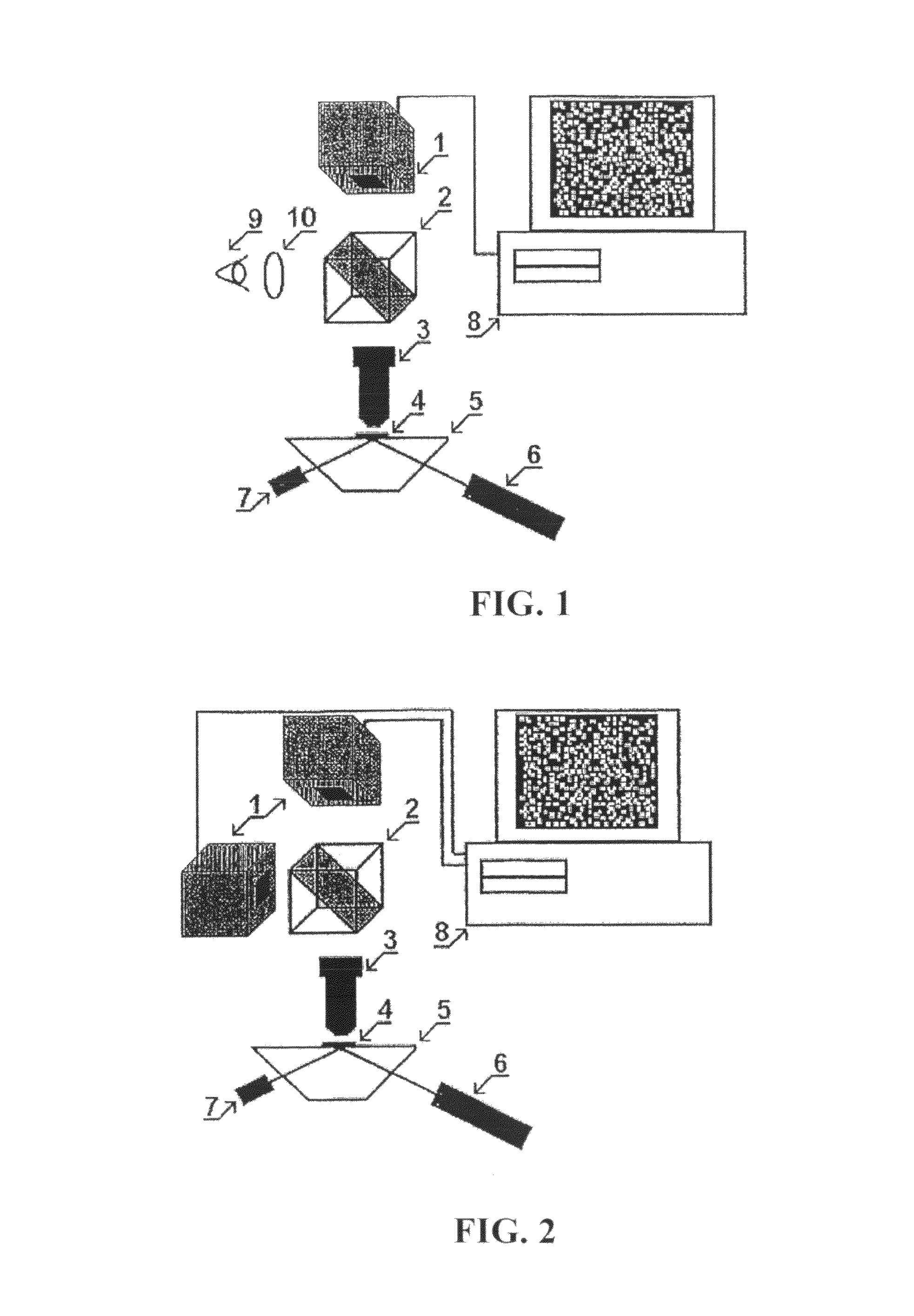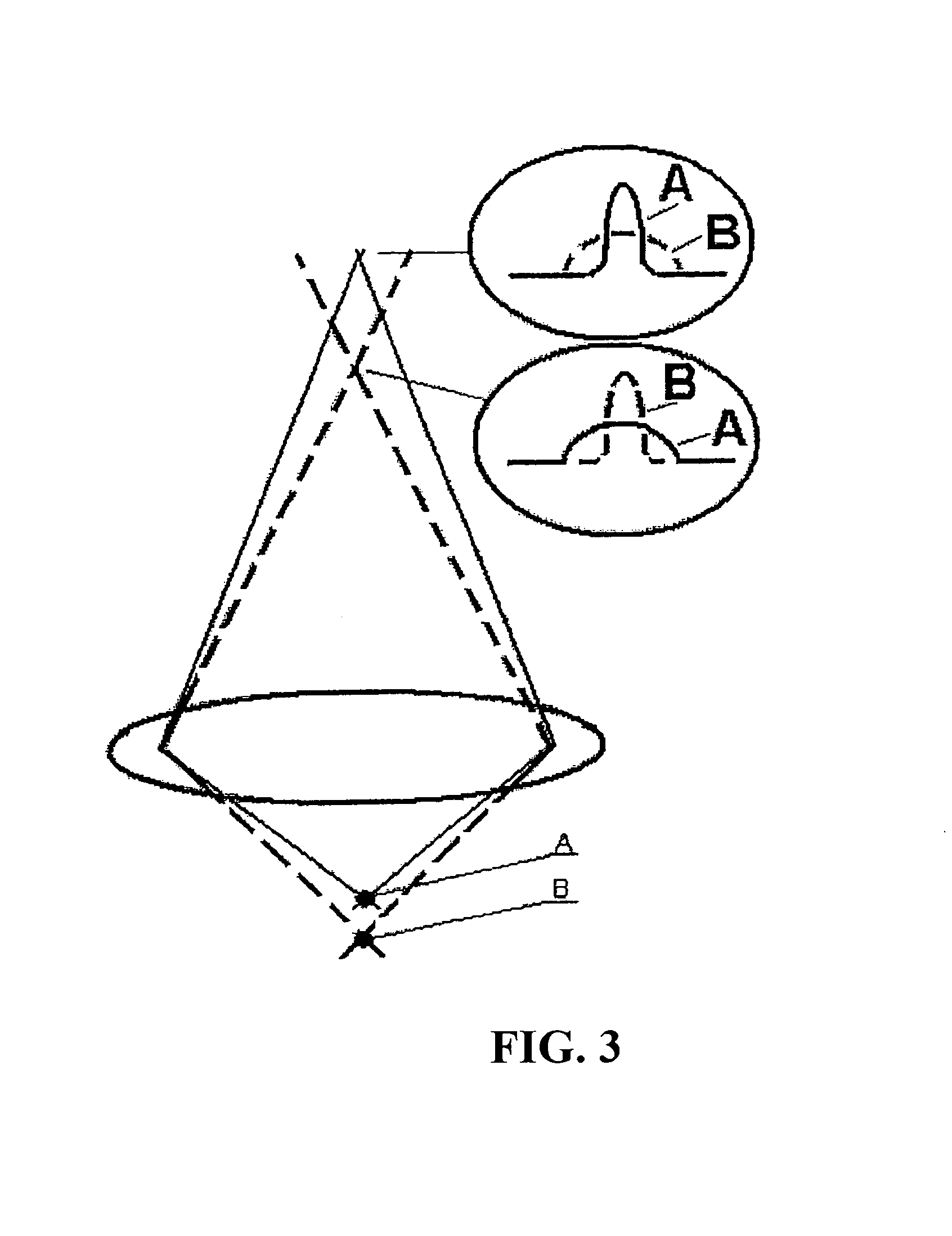Fluorescent nanoscopy method
a fluorescence nanoscopy and nanoscopy technology, applied in the field of scientific research equipment and lens fluorescence microscopes, can solve the problem of hard to ensure the stability of molecular structures, and achieve the effect of improving the accuracy of the third coordinate definition
- Summary
- Abstract
- Description
- Claims
- Application Information
AI Technical Summary
Benefits of technology
Problems solved by technology
Method used
Image
Examples
Embodiment Construction
[0020]The fluorescent microscope-nanoscope, as it is shown on FIGS. 1 and 2, is equipped with: one (FIG. 1) and two (FIG. 2) monochrome video-cameras (1) with digital output and suppressing color-filters, located opposite to their sensors (CCD). These color-filters pass only fluorescent light to cameras. A microscope is also equipped with a light dividing removable prism (2); object lens (3) with zoom up to 100× and an aperture up to A=1.4. Object (4) is pressed down to glass object holder (5) which is beveled in the form of truncated prism edges. The device also has laser (6) with lens system for exciting fluorescence through prism planes; with a pulse UV-source with a lens system for photolysis of blocking fluorescence groups, present on dye molecules. Another important part is computer (8) with software for recording and working with digitized images. This software is also used for control of a power source, and providing energy for UV pulses and electrophoresis device. Eye lens ...
PUM
| Property | Measurement | Unit |
|---|---|---|
| thickness | aaaaa | aaaaa |
| diameter | aaaaa | aaaaa |
| distance | aaaaa | aaaaa |
Abstract
Description
Claims
Application Information
 Login to View More
Login to View More - R&D
- Intellectual Property
- Life Sciences
- Materials
- Tech Scout
- Unparalleled Data Quality
- Higher Quality Content
- 60% Fewer Hallucinations
Browse by: Latest US Patents, China's latest patents, Technical Efficacy Thesaurus, Application Domain, Technology Topic, Popular Technical Reports.
© 2025 PatSnap. All rights reserved.Legal|Privacy policy|Modern Slavery Act Transparency Statement|Sitemap|About US| Contact US: help@patsnap.com



